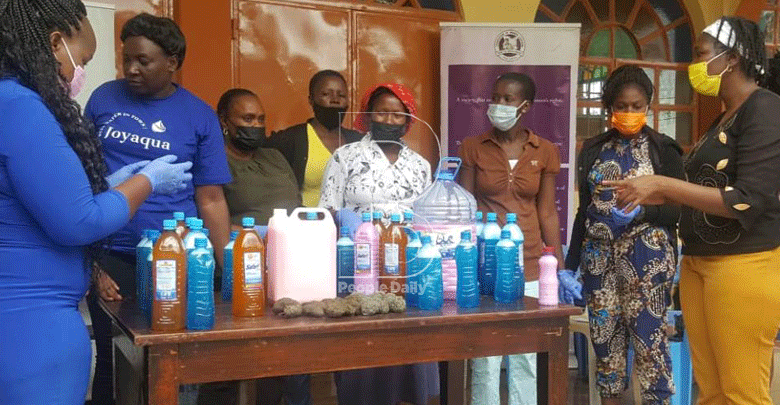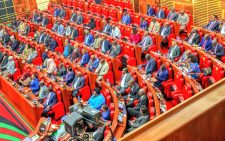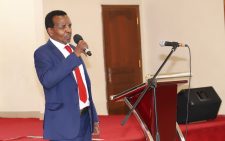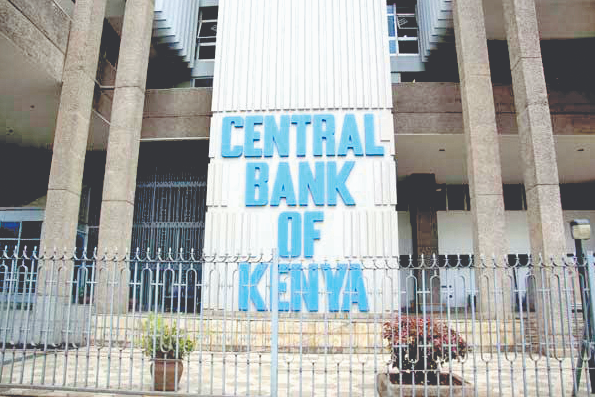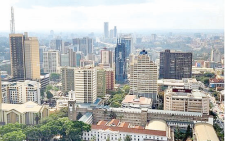Fodder farming provides relief to drought-hit pastoralists

On a typical Wednesday afternoon in Bisanadi in Kinna Ward, Isiolo county, the sun is blazing down over the vast land with searing heat. The journey to Kinna from Isiolo is approximately 100 kilometers.
Over the years, communities in the region have been worst hit by drought, which wipes away their animals leaving them with no means to sustain their livelihoods.
When drought hits, carcasses litter the roads and paths, especially those leading to water points.
It is in this regard that some groups of pastoralists have sought ways of adapting to the drought situation through fodder production that has gone a long way in ensuring their livestock have enough pasture and have surplus to sell to other pastoralists.
Wake-up call
Makai Mamo, chairlady Bisanadi Cultural Group says fodder production has been beneficial to them in as far as sustaining their livelihood is concerned.
“At such a time, you could be seeing carcasses of livestock strewn all over that die due to lack of pasture.
But it is now a different story because of the actions we took to ensure that our livestock is healthy through learning about production of fodder,” says Mamo.
Drought that had affected the area in the previous years was a wake-up call for them. Many had lost their cattle and didn’t have other means to survive.
According to Mamo, joining the group was a concerted effort by the members to see to it that they eradicate poverty.
“When we came together, we exchanged ideas and saw farming as a viable option to eradicate poverty through food production.
We plant grass for our animals in our shambas and other foods that are consumed by our families. We sell the grass and get money to educate our children,” says Mamo.
“Our livestock are healthy and we get milk from the cows and meat when we slaughter the animals.
That is food security, which has been enhanced by growing the pasture,” she adds.
On this particular trip to the area to see how the groups grow their fodder, they sold 400 bales, each at Sh500, collectively earning Sh200,000 in that day.
As a member of the group, Mamo says that whenever she wants to purchase some hay for her livestock, she gets it at an affordable price from the group.
“We sell the grass and divide the proceeds amongst ourselves so that each one of us has some money to buy food or pay school fees for our children.
During the rainy season when there is plenty of grass in the farms, we harvest and preserve it in the stores for future use, especially such times when there is drought,” she explains
Starting small
Hassan Bagaja Tinde, a member of Kinna Tukinisa Fodder Group is also quick to point out how growing fodder for livestock has been beneficial to people in the area.
“Our group, which started in 2016 comprises of 20 people —18 women and two men.
As pastoralists, we experienced drought from time to time, which greatly affected our livestock and overall well-being since we had no other means to sustain our needs.
We realised that the only way to be resilient against the effects of drought was to plant grass fodder instead of ordering bales of grass for our animals from all the way in Meru,” says Bagaja.
According to Bagaja, they now plant the grass and nurture it until it is ready for harvesting.
“In the first year, we harvested 200 bales of grass from our farms, but didn’t get good market for it.
However, that didn’t discourage us from trying again. We went to the elders and were allocated 15 acres of land to plant the fodder grass.
This year we harvested and sold 615 bales of grass and got Sh215,000,” explains Bagaja.
Growing the fodder grass requires time, a lot of hard work and a concerted effort of every member of the group.
“We normally pack and tie the bales of fodder grass manually. When we get enough funds, we are hoping to purchase a manual hay baler, which will make our work easier,” Bagaja adds.
Training locals
To ensure that there is sustainability of fodder production, organisations such as United States Agency for International Development (USAID) Nawiri, World Food Programme and the Isiolo County Government-Ministry of Agriculture have teamed to train the groups on how to produce fodder, right from the planting stage, harvesting and storage.
“First, we ensure that the individuals have a passion for fodder production and that they are able to get water to irrigate their farms when there is no rainfall, and also help them to get markets for their produce,“ says Gabriel Mbokothe Livelihood and Private Sector Advisor, USAID Nawiri.
In areas such as Garbatulla it takes concerted efforts to provide a direct linkage between fodder producers in Kinna and the buyers in Garbatulla.
The groups are also trained on how to feed their animals to minimise wastage and also on storage of the fodder.


